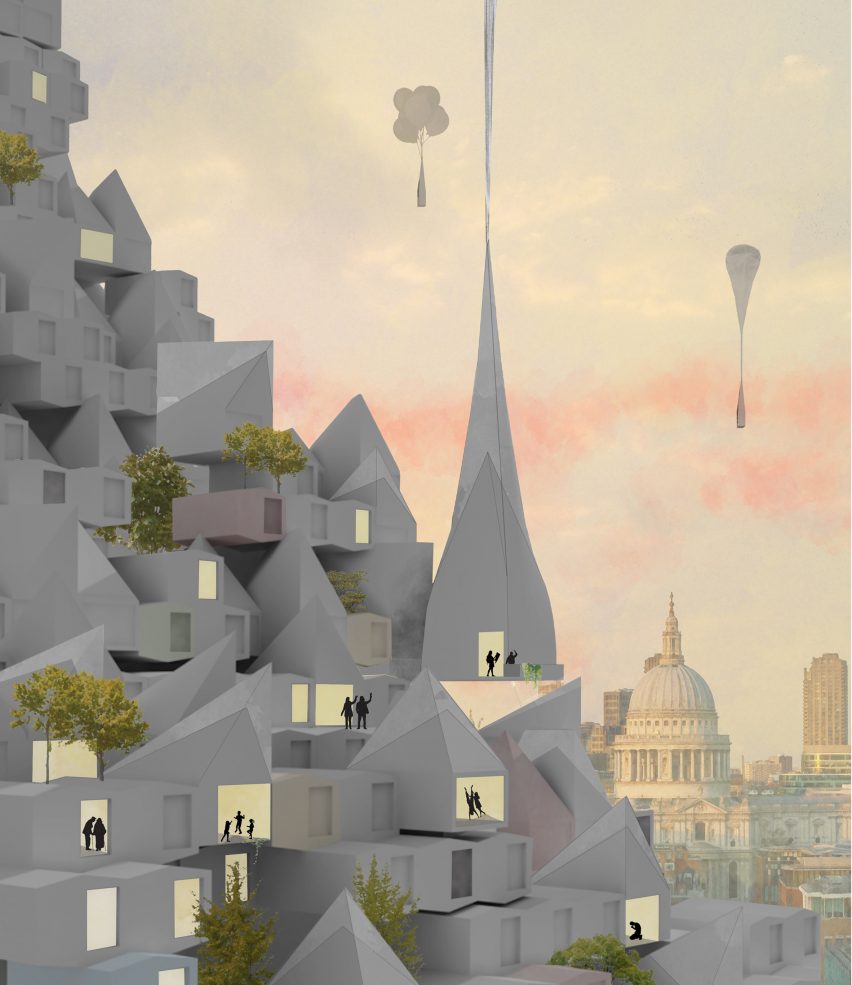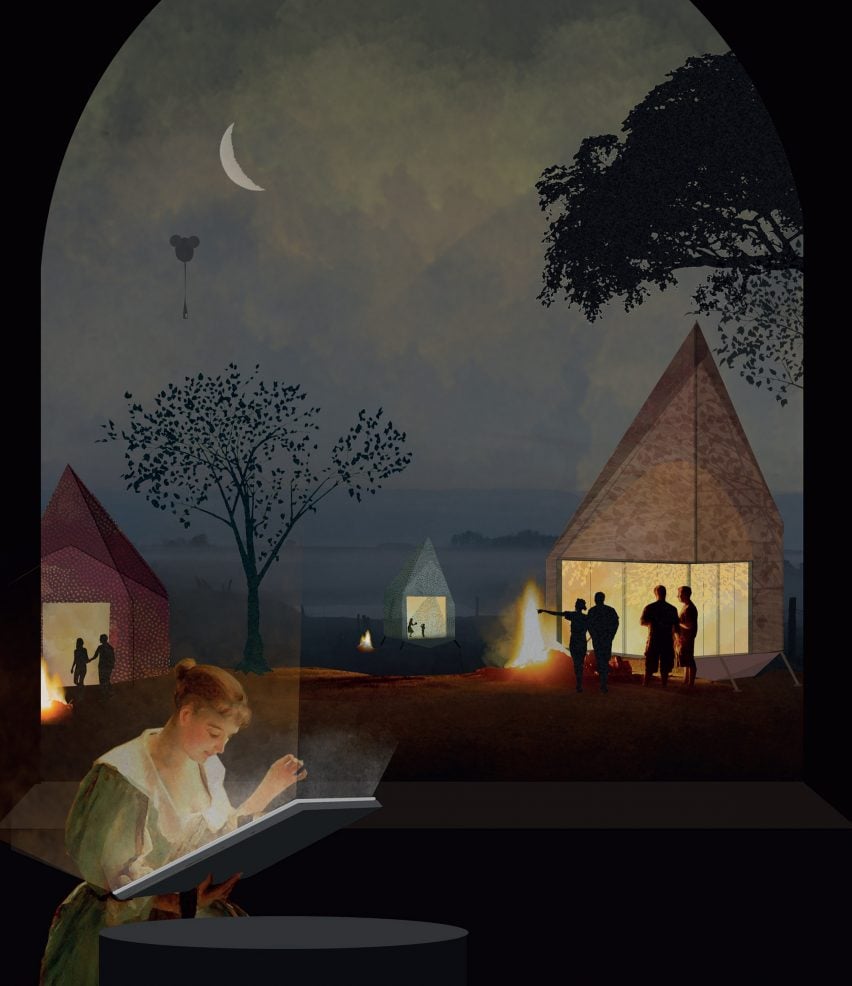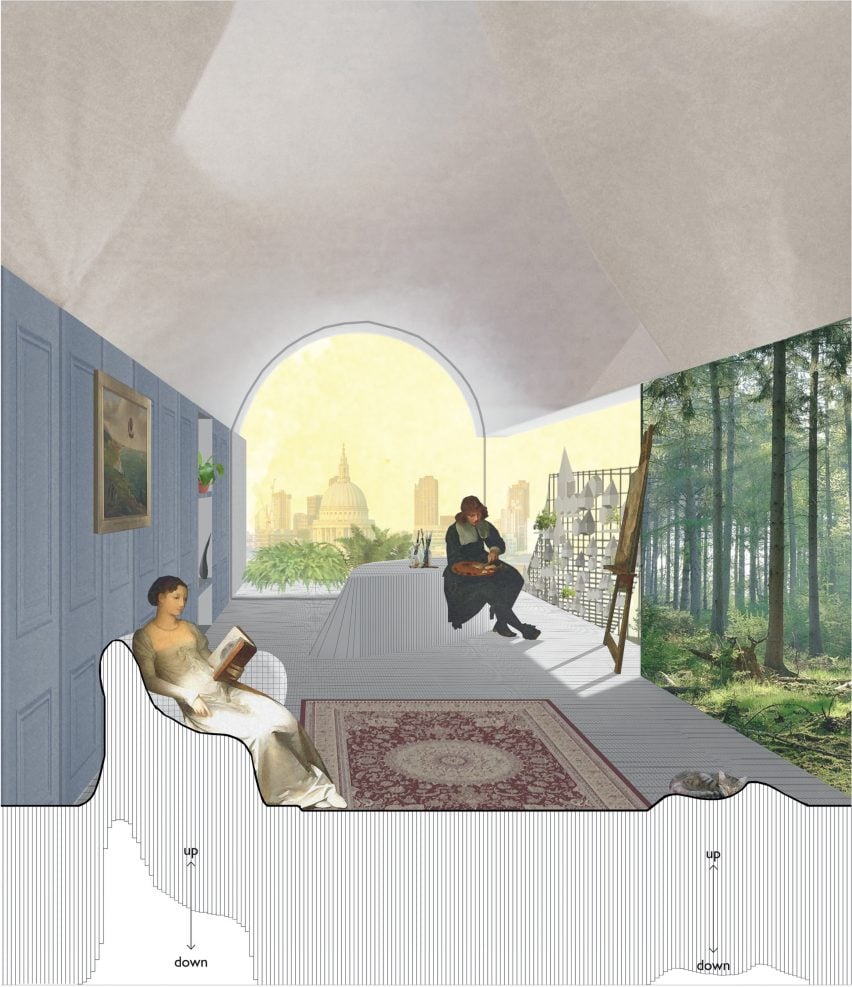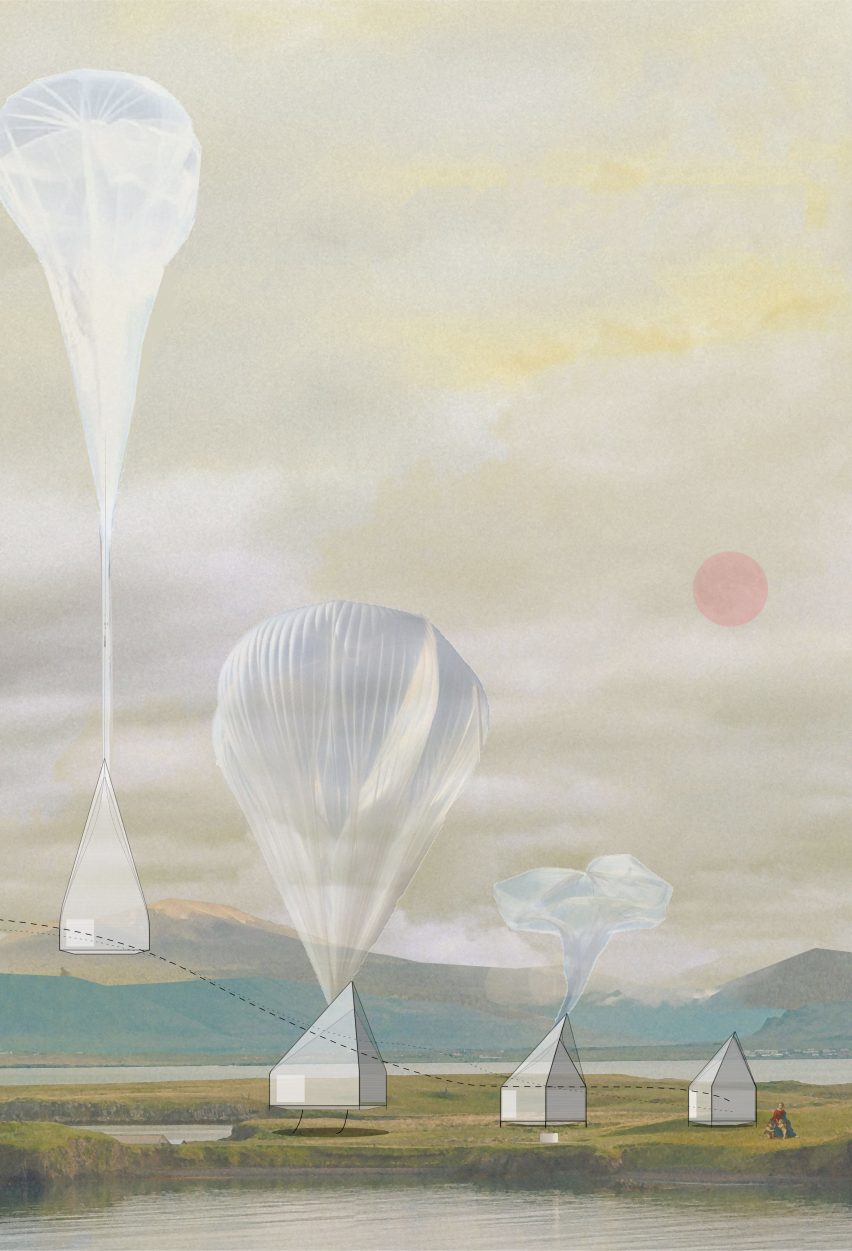Studio McLeod and Ekkist create balloon-powered flying houses concept
The latest instalment in our Dezeen x MINI Living video series explores a concept for flying houses by Studio McLeod and Ekkist, which would allow people to move between cities and the countryside using hot air balloons.
The project by London-based architects Studio McLeod and design consultants Ekkist won second place in the Dezeen x MINI Living Future Urban Home Competition, which called for proposals for how people could live in 100 years time.
Called Hour Glass, the concept imagines small houses equipped with hot air balloons, which would enable residents to move their home from city to city, or between urban and rural environments.

"We will have the freedom to live in the city or in nature, with a choice of when to be connected or off-grid," principal of McLeod Studio, Duncan McLeod, told Dezeen.
"We will be able to choose where to wake up each day," he added.
The concept is inspired by the nomadic heritage of humans.
"We were nomadic for 99 per cent of our known existence," McLeod said. "In an increasingly urbanised world, many seek an escape, to travel or reconnect with nature. Our proposal addresses spatial inflexibility and urbanisation, inspired by this nomadic heritage."

Studio McLeod and Ekkist propose that the houses would be lightweight and able to adapt to a range of climates, depending on where the user decides to relocate to.
In urban areas, the houses would dock to a frame-like mega structure along with other flying homes, providing an opportunity for community and social interaction between neighbours.
The interior and exterior walls of the houses would be dressed in an "LED skin" giving it the ability to change its appearance on demand.
"Internal walls could be a colour, resemble panelled walls or feature livestreamed scenes of nature," McLeod explained. "Externally, the skin could offer camouflage, fit into the colour scheme of the urban frame structure, or take on any conceivable colour or pattern."

The LED skin would also have a function to be transparent from the inside to allow residents to look outside without impacting on their privacy.
"External walls could be transparent when viewed from the inside and opaque when viewed from outside," McLeod said.

The house would feature an intelligent flooring system made up of a series of motorised pins, which could rise to different heights to take the shape of furniture, similar to the technology behind a shape-shifting table top that MIT Media Lab presented during Milan Design Week in 2014.
McLeod told Dezeen this would enable residents to transform their tiny home to various uses when needed, such as a dining room, a bedroom, or an office, to "create the largest interior space on the smallest footprint".
"It is a clear and transformable space to live, work and sleep," he said. "Rather than having to move and store furniture, we wanted the furniture to appear and disappear as needed."

The Dezeen x MINI Living Future Urban Home Competition received over 400 entires from 56 different countries around the world. Fifteen concepts from nine different countries were initially shortlisted in December 2018, from which the jury selected the top three.
First place was awarded to the London-based architecture firm The D*Haus Company for their proposal for flood-proof Georgian townhouses.
The contest is an extension of the ongoing Dezeen x MINI Living Initiative, a collaboration between Dezeen and MINI Living exploring ideas that could shape our cities in years to come.
Dezeen will be publishing videos exploring each of the top three competition designs in more details over the coming weeks.
